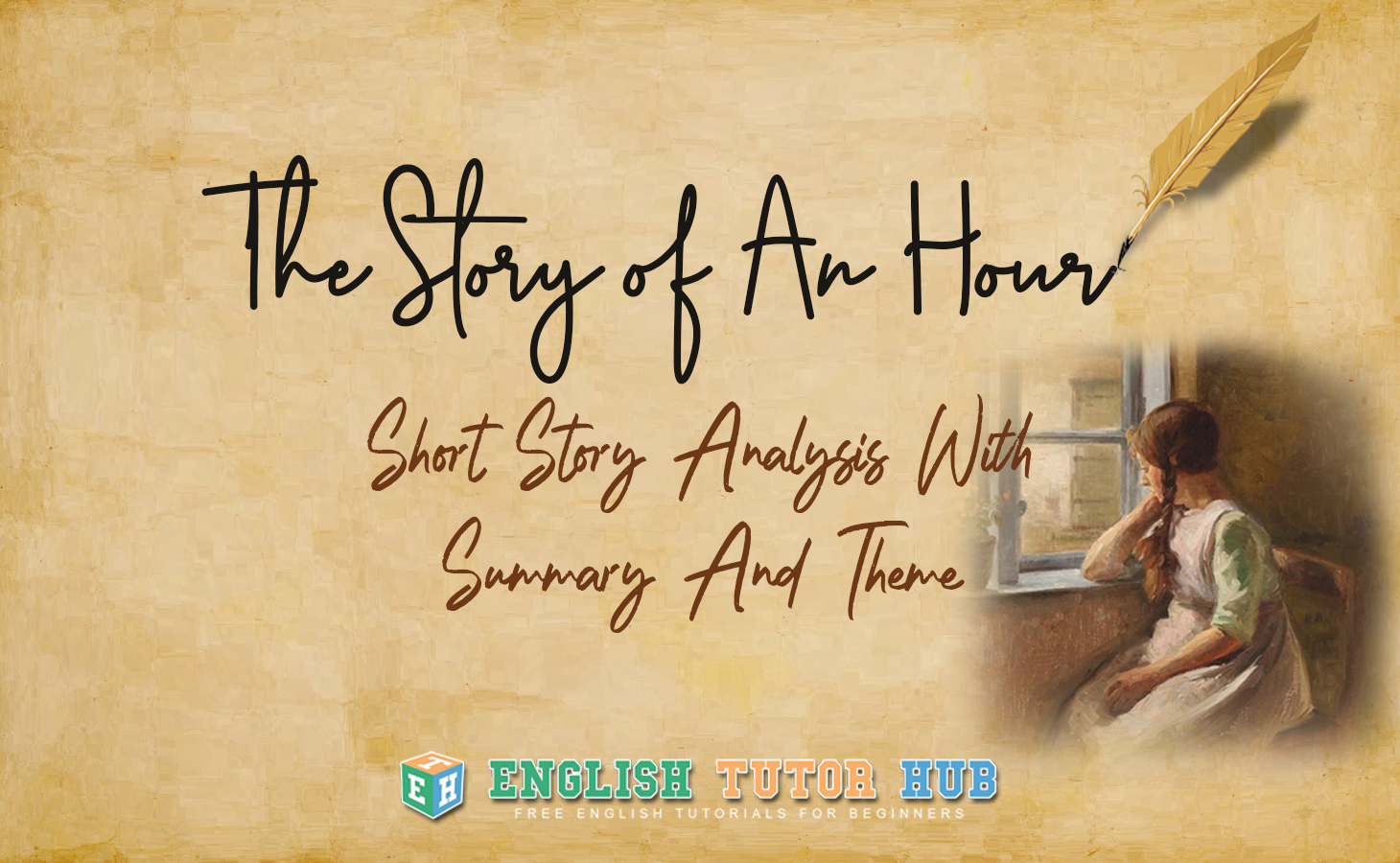Imagine a world where joy can turn into despair in just an hour. The Story of an Hour, a profound short story penned by Kate Chopin, explores the complexities of freedom, loss, and societal expectations in the confines of a single hour.

Image: www.studocu.com
The protagonist, Mrs. Mallard, upon receiving the news of her husband’s tragic demise in a train accident, initially experiences an overwhelming sensation of solitude and alienation. However, as moments turn into hours, a profound realization spreads its liberating wings within her: she is now a woman of absolute independence and autonomy. “Free! body and soul free!” she jubilantly proclaims.
Yet, this euphoria proves to be short-lived. The premature return of her husband, alive and well, shatters her fantasies of newfound liberation. The cruel twist of fate thrusts Mrs. Mallard back into servitude, diminishing her blooming autonomy, crushing her dreams of independence, and rupturing her newborn sense of liberty.
The Duality of Freedom and Loss
Chopin masterfully weaves the intricate web of emotions that envelop Mrs. Mallard. Initially enslaved by societal norms and the constraints of marriage, she gradually sheds these shackles, reveling in the realization of her own self-sovereignty. However, this triumph is swiftly eclipsed by the news of her husband’s safety.
Mrs. Mallard’s tragedy stems from the clash between her newfound freedom and her ingrained responsibilities as a wife. The conflicting impulses within her—the urge to embrace liberty and the duty to conform—tear her inner world asunder. Her brief taste of autonomy heightens the bitterness of its loss, fueling her tragic demise.
The Futility of Societal Expectations
Chopin’s narrative shines a harsh light on the societal expectations that unjustly confine women. Mrs. Mallard’s brief moment of exhilaration at the prospect of shedding societal burdens points to the oppressive nature of these norms. Her immediate reversion to despair upon her husband’s return highlights how women’s sense of self and worth are closely tied to the roles society dictates.
Feminist Symbolism: A Call for Liberation
Beyond its literary prowess, The Story of an Hour reverberates as a feminist text, advocating for women’s emancipation from stifling traditions. Mrs. Mallard’s internal struggle encapsulates the broader social movement that sought to shatter societal conventions and empower women to pursue their aspirations free from judgment.
Chopin’s bold portrayal of Mrs. Mallard’s fleeting freedom, though ending in tragedy, serves as a poignant reminder of the struggle for female autonomy. The story became a rallying point for women who yearned to shatter the societal chains that bound them.

Image: englishtutorhub.com
The Agony and the Ecstasy: An Analysis of Mrs. Mallard’s Journey
Mrs. Mallard’s journey illuminates the complexities of the human heart. Her brief interlude of freedom sparks within her an exhilarating sense of relief, self-discovery, and empowerment. Yet, the weight of societal norms and expectations swiftly descends, shattering her newfound joy.
Her struggle mirrors the lives of countless individuals who both long for and dread the liberation from societal chains. Often, we fear the unknown, clinging to the familiar even when it brings us no true fulfillment, fearing the potential risks associated with venturing beyond these boundaries.
Summarize The Story Of An Hour
Conclusion
The Story of an Hour continues to captivate readers, provoking discussions about freedom, loss, and the weight of societal expectations. Chopin’s nuanced portrayal of Mrs. Mallard highlights the complexities of human nature, exploring the conflict between societal constraints and the indomitable spirit that seeks self-determination. Ultimately, the story invites us to question our own preconceived notions and to reflect upon the true meaning of liberation. As Mrs. Mallard’s life extinguished before the hour was up, her struggles and fleeting joy serve as a perpetual reminder of the arduous journey towards genuine independence and fulfillment.